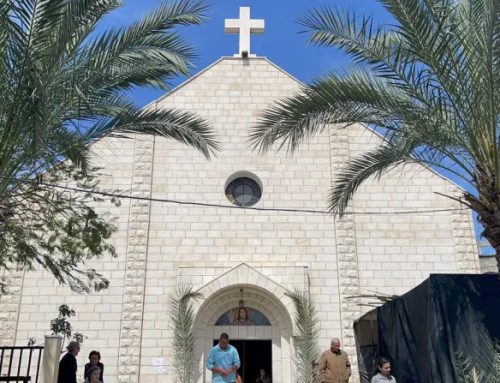First I read the headlines and follow the stories that make the popular media: newspapers—both those delivered to the driveway and those delivered via the magic of electronics—television news and commentary, and magazines.
First I read the headlines and follow the stories that make the popular media: newspapers—both those delivered to the driveway and those delivered via the magic of electronics—television news and commentary, and magazines. Then I move to some alternative sources: Israeli newspapers, press releases from peace organizations and research outfits, list serves, and posts from friends and acquaintances still living and working in Israel-Palestine. It takes a tremendous amount of data, analysis, observations, and opinions from the second set of sources to guide the meandering streams of snippets, misconceptions, and partial truths of the first source into pools of reality.
So it was that I began to look for signs of hope growing out of the Annapolis conference. It was after all a “gathering of lowest expectations.” Reading between the lines of pre-conference announcements, one quickly got the impression that the Bush administration would judge its success on which nations they were able to persuade to take part. No clear mission. No real agenda. No Hamas, so only a portion of the Palestinian people were to be represented. Yet we must give credit for simply accomplishing what they did: getting most of the parties at interest and most of the parties who hold the power to bring about positive change to sit together and make promises to move forward.
The obvious question now is “What next?” My observation over time is that, while many Palestinian and Israeli leaders continue to act as if ongoing suffering and conflict is their true aim, the vast majority of ordinary people are—to use a colossal understatement—more than ready and willing to make the tough compromises needed if two secure, interdependent nations are to emerge from the seemingly endless tunnel of death and despair they are traversing together. So, it was with faint smiles of hope that all justice and peace seekers greeted Israeli Prime Minister Ehud Olmert’s comment on the way home from Annapolis, “If the two states solution collapses, the state of Israel is finished.” This sentiment, long held by realists around the globe, emerged from the lips of a key political figure who in the past has done precious little to enhance any peace process. Lots of people have realized that, quite possibly, the best motivation for Israel to get serious about peace with justice is to understand that their nation’s long term security cannot sustain this constant occupation and consequent oppression. And now Olmert has chosen to give voice to the whisper. I’m certain that his words were spread widely to listening and hopeful watchers. However, one would have had to be listening far more closely to hear the next pronouncement.
To use a tired old image, the ink on the Annapolis agreement was barely dry when the Israeli government announced that 307 housing units would be built in the settlement
The United States immediately sought “clarifications” on the settlement building plan.” This is diplomatic code for, “We don’t like what you are proposing, but we won’t say so publicly.” Very quickly thereafter, however, U.S. Secretary of State Condoleezza Rice made this much stronger and more pointed statement, “I’ve made clear that we’re in a time when the goal is to build maximum confidence between the parties, and this doesn’t help to build confidence.” It would be absurd to assert that this episode embodies the totality of the conflict and the future, but it certainly does give some clues. Under the guidance of the old adage that it is often more enlightening to watch what one does rather than listening to what he says, we need to watch closely to see which is closer to the truth: Olmert’s words or his government’s actions. In the same way our administration could demonstrate its level of commitment to a just peace by backing up its objections to the settlement building. If it does, it would be a departure from its previously empty rhetoric whereby its “concerns” are duly noted by Israel which then proceeds to bring on the construction cranes.
We share a hope, wish, and prayer that the world has at long last turned its face toward Jerusalem to walk together for peace with justice for all. But oft times we need to know just a “pinch” more about things than the popular media is willing to give us if we are to know the ways in which our voices can do the most good.
Russell O. Siler, Retired Pastor





